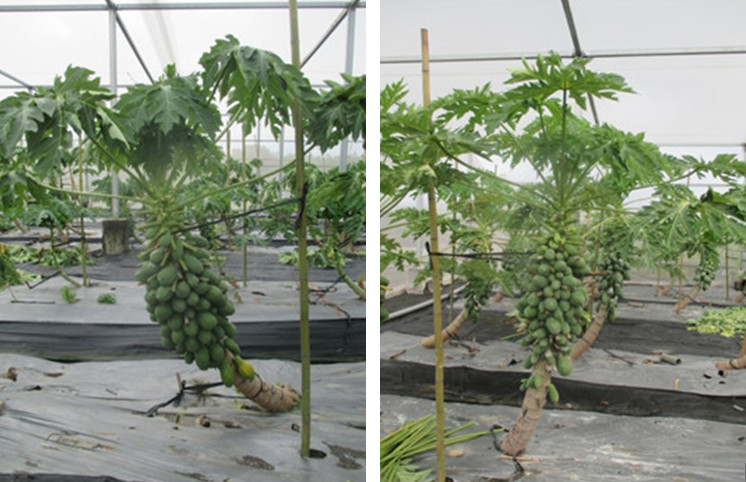- Technology development of poultry feed for added value of by-products from tomato and pumpkin seed collection
- Establishment of upland crop waste mobile processing system
- Research on Green Manure Crops to Provide Dry Season nectar Source
- Establishing production adaptation and management techniques for drought-tolerant potato
- Research on Improving Agricultural Workers' Adaptation Strategies in Response to Climate Change: A Case Study of Agricultural Workers in Seedling production industries.
- Application of Herbal Medicine Plants in Animal Feed Additives and Establishment of GAP Production System.
- Constructing intelligent identification services for seed and seedling industry
- Construct expert system for forecasting the production of major important vegetables seedlings
- The establishment of smart production and application model of plant tissue culture
- The establishment of high through-put sequencing workflow to detect pathogens of tomato and Capsicum seeds
- Establishment of precise and efficient breeding technology for industry-oriented traits of cauliflower
- Molecular Marker-Assisted Tomato Disease Resistance Breeding Selection Model Construction and Technology Development
- Participatory selection of healthy ginger seedlings and establishment of production system
- Participatory selection of taro regional clonal lines
- Development of seed production technology for new grain crop varieties - Maize
- Establishment of highly effective isolated facility for healthy seedling
- Research of optimization for detecting operation procedure on seed-borne pathogens
- Study and improvement of strengthening seed testing technology
- Analysis and application of root‐associated microbes from soil-borne disease resistant and sensitive lines of Solanaceae crops
- Developing of crops novel assisted breeding technology on pepper and melon
- The study of healthy seedling production by in vitro micropropagation
- Germplasm development and application of Holcoglossum genus and Cattleya genus.
- Research on Genetic Resources and Plant New Variety DUS Testing Techniques Management and Application of the Economical and Special Crops in Taiwan
- Establishment of organic seed production and supplying system for grain crops
- The seedling leaf electrolyte leakage index was used to select papaya heat-resistant Resistance and virus Resistance varieties.
- Tomato hybrid seed miniature production
- Tomato(Solanaceae)resistance to bacterial wilt of selection in Field.
- Techniques development for bulb flowers breeding
- Breeding for disease resistant tomato and superior quality eggplant.
- Establish Cucurbitaceae vegetable breeding technologies of heat tolerance
- Establishing the Technology of New Papaya Viety Breeding for the International Market.
- Research on the Planning of Crop Seed Conservation Course and Training Performance Analysis for The Seedling Training Courses
- Establish a digital platform for seed illustration
- Establishment of automatic seedling evaluation system and integration of seed testing platform
- Study of inspection and monitoring system for precisely breeding crops
- Enhancing the seed testing technical cooperation with ISTA and new southbound countries
 Home > Achievement > 2021 Research Project List > The seedling leaf electrolyte leakage index was used to select papaya heat-resistant Resistance and virus Resistance varieties. Home > Achievement > 2021 Research Project List > The seedling leaf electrolyte leakage index was used to select papaya heat-resistant Resistance and virus Resistance varieties. |
The seedling leaf electrolyte leakage index was used to select papaya heat-resistant Resistance and virus Resistance varieties.
In this experiment, the leaf electrolyte leakage rate was used as an early screening index for heat tolerance in papaya breeding. The leaf electrolyte leakage rate of 8 lines was observed at the seedling stage. The two lines B23 and B5 were greater than Tainong No. 2.The electrolyte leakage rate of adult plants B21 and B5 is lower than that of Tainong No. 2, and the performance of the seedling stage and the adult plant are inconsistent. It is speculated that the cause may be surrounded by the late field in addition to high temperature, there is still a large amount of rainfall and disease effects, resulting in the two periods of measurement results are not exactly consistent.
Only at the beginning of the high temperature, pollen is released and set set normal fruits, and only after the continuous rain and the temperature drops, will there be a short period of pollen release and normal pistils. Then, only when the temperature dropped after continuous rain and pollen would be released for a short period of time and normal pistils appeared,indicating that the tested strains were Insufficient heat resistance This test is the first year of implementation. The test method is established. Later, more lines will be tested and field comparisons will be used to select heat-resistant varieties.
 ▲Fig.1. Leaf electrolyte leakage rate is low, and plants can still bear fruit normally during high temperature period (Left: Line B5, Right: Line B23) |
